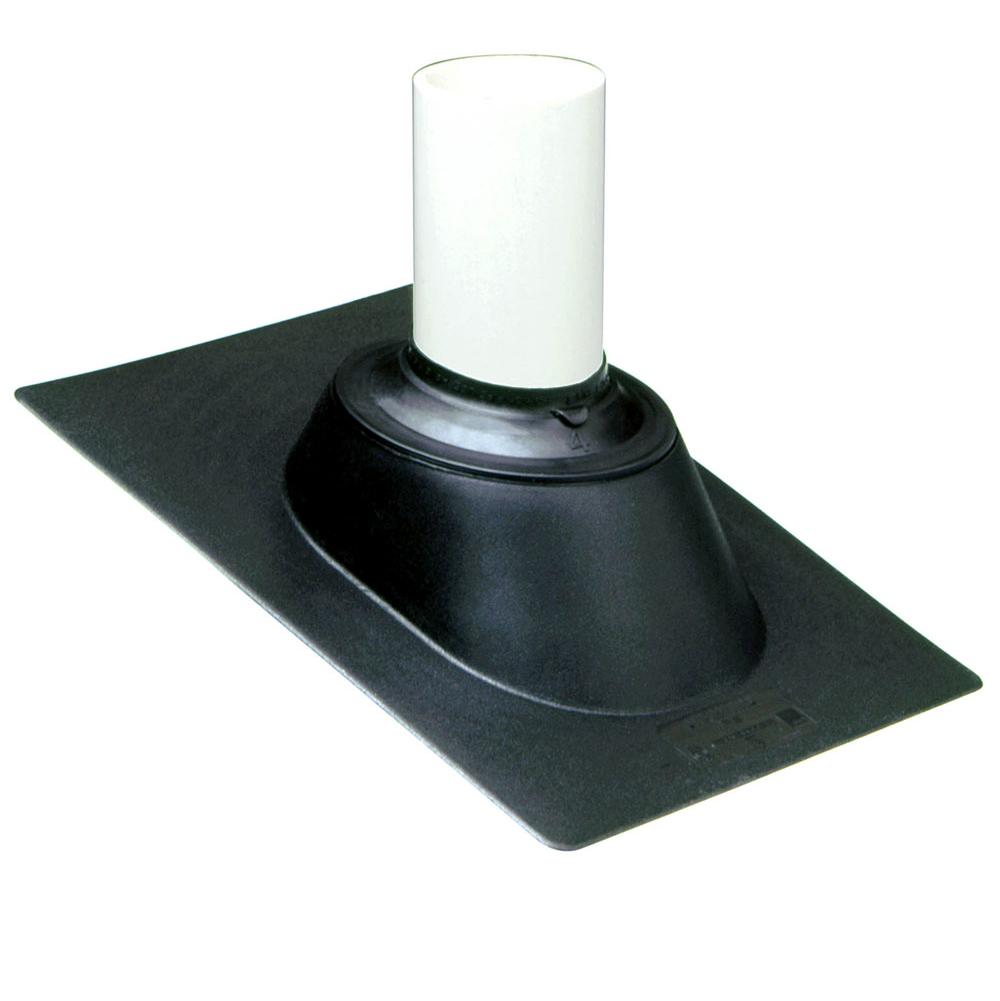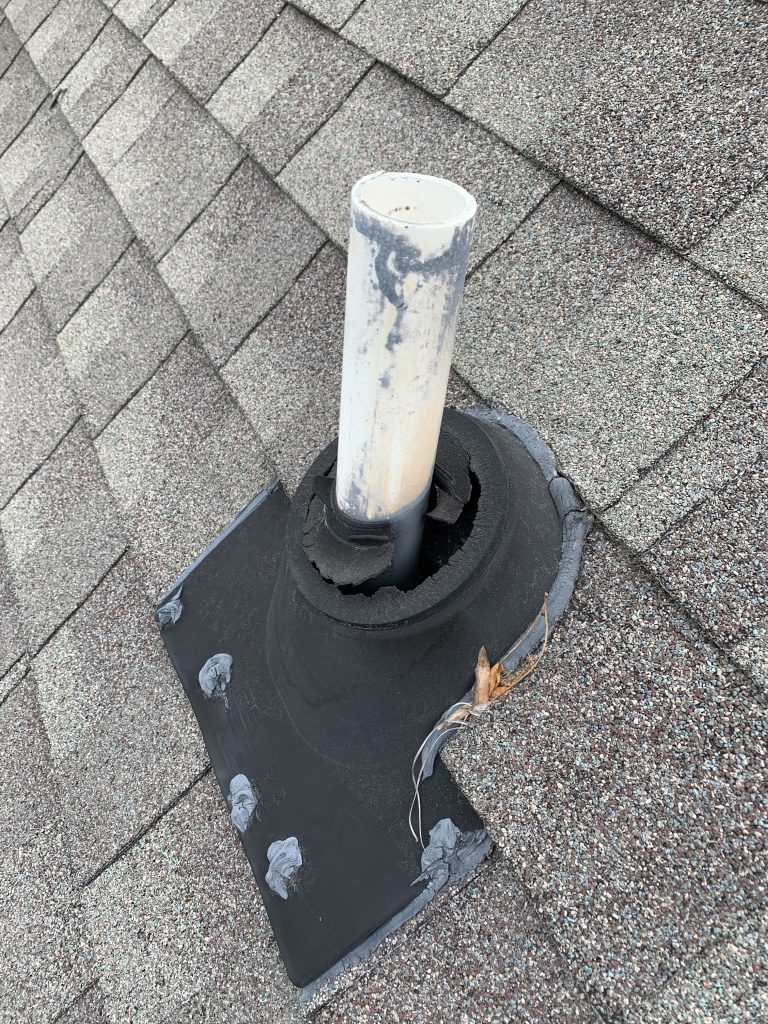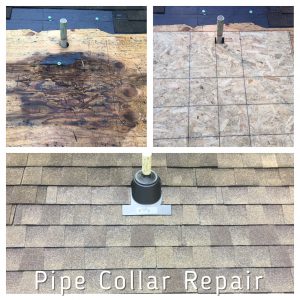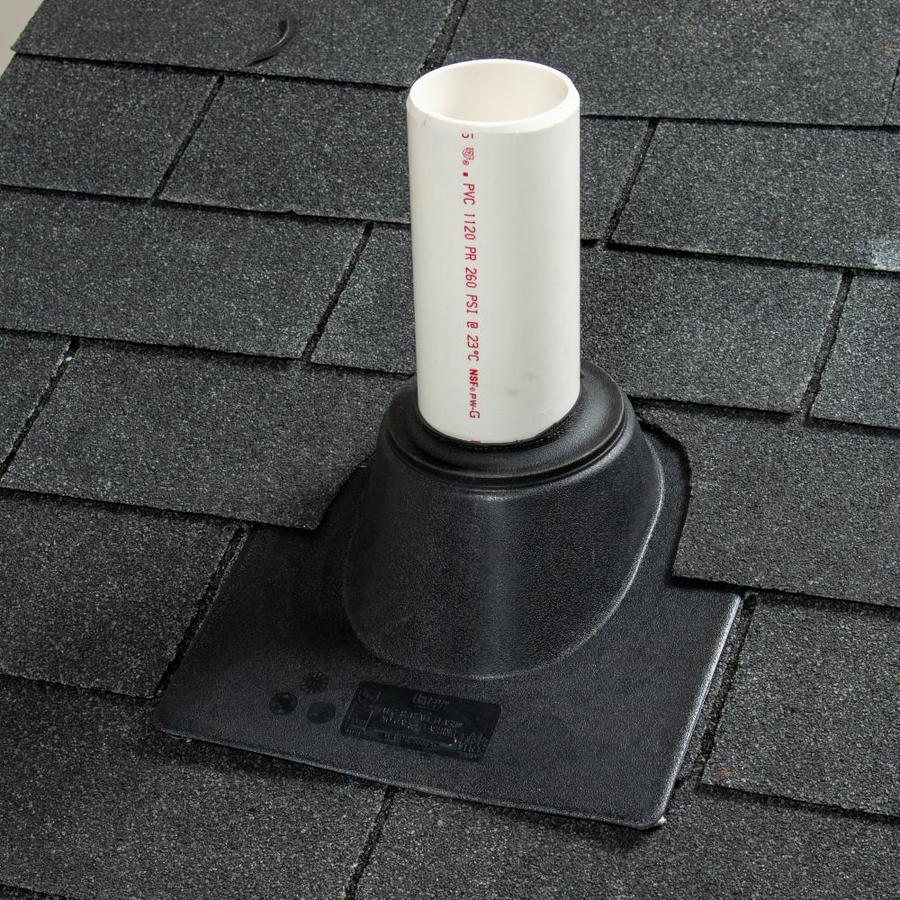Plumbing Vent Pipes – What Do They Do?
First, it is important to know what the pipe that penetrates through the roof and pipe collar is for. These pipes are connected to your homes plumbing system. The pipe allows for air and/or gas to escape through the roof. Rain water goes down into the pipe when it rains and the water flushes out through the plumbing system. There are no moving parts and these pipes tend to be located on the rear of the home. Therefore, typically most homeowners don’t think twice about these pipes until they begin to leak.
What Does A Pipe Collar Look Like?
The most common pipe collar (also referred to as a pipe boot) used by roofing contractors in the Charlotte region is 3-in-1 hard plastic boot. This type of boot comes with an elastomer collar that fits tightly around the plumbing vent pipe. The rubber gasket is designed to fit pipes from 1 1/4″ – 3″ in diameter. For 4″ pipes a larger collar is used with a 4″ gasket.

How Long Should a Pipe Collar Last?
Why Does a Pipe Collar Leak?
Generally a pipe collar will leak for one of two reasons. In some cases a pipe boot will be leaking both ways. Here are the two ways pipe collars leak.
1 – The rubber gasket has failed as shown in the picture.  The gasket is made of rubber and therefore will dry rot over time. The greater the exposure to the sun the faster the rubber will decay.
The gasket is made of rubber and therefore will dry rot over time. The greater the exposure to the sun the faster the rubber will decay.
2 – Water will run under the bottom corners of the flashing flange and leak down through the nails used to secure the flange. Nailing the base of the flange was common practice for many years in the roofing industry. However, today we use sealant to glue down the exposed portion at the base of the flange rather than securing with nails. This eliminates the possibility for leakage at the base of the flange.

Does A Leaking Pipe Collar Damage The Roof Sheathing?
Any roof leak should be dealt with right away. A leaky pipe collar is no exception. If left alone water will leak under the roof and eventually rot the plywood sheathing as illustrated in the photo.

Example of A Properly Installed Pipe Boot
If installed correctly, a pipe collar will be watertight no matter how hard it’s raining. The base flange should be lapped into the shingles using the 50/50 rule. Roughly the top half of the flange should be covered by shingles. Conversely, roughly the bottom half should be over the shingles.

How Do I Know If I Have A Leaky Pipe Collar?
Leaks around pipes collars often go undetected. The roof leak is usually never a major one but it does allow rain water to enter the attic space. If the attic is properly insulated, the insulation will absorb the water, completely drying before the next rain. This cycle will go on-and-on until the the plywood decking surrounding the pipe boot completely rots. However, these small leaks work like compound interest, if you leave it alone long enough, the monetary value will be huge.
Types of Pipe Boots
Pipe collars are not only available in a variety of sizes but they come in a variety of materials as well. As we mentioned previously the most common type is the hard plastic base with an elastomer rubber gasket. However there are certain roof systems where a different material may be required. For example; Slate, tile and cedar shake roofs are designed to last for 50 plus years. Replacing fixtures such as pipe boots on this type of roof is very difficult and expensive. Therefore a standard pipe boot would not make sense. Instead, a lead pipe collar is often the boot of choice for such roof systems.
Another option would be a boot that comes with a galvanized steel base.
